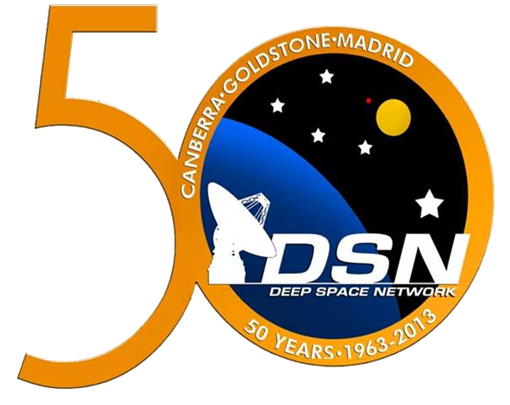Founded October 1st, 1958, the NASA Deep Space Network, sometimes abbreviated as DSN, is a worldwide network of U.S. spacecraft communication facilities, located in the United States, Spain, and Australia, that supports NASA’s interplanetary spacecraft missions. In addition to supporting spacecraft communications for NASA, the DNS performs radio and radar astronomy observations for the exploration of the Solar System and the universe, and supports selected Earth-orbiting missions. Management of the facilities is performed for NASA by the Jet Propulsion Laboratory, which is part of Caltech.
Importance
Each one of the communications facilities are placed 120 degrees apart from each other around the Earth, in a semi-mountainous, bowl-shaped terrain to help shield against radio frequency interference. The strategic placement with nearly 120-degree separation permits constant observation of spacecraft as the Earth rotates, which helps to make the DSN the largest and most sensitive scientific telecommunications system in the world. Without the Deep Space Network, NASA would have trouble if not be unable to communicate with distant space missions such as New Horizons and the Voyager Probes.
Examples of what can be done using the deep space network include but are not limited to transmitting commands or software changes to spacecraft, tracking spacecraft, and gathering data from those spacecraft.
History
The deep space network was formed when NASA consolidated the portable radio tracking stations in Nigeria, Singapore, and California to track and plot the orbit of Explorer-1, which was the first US satellite and launched by the army. Later in 1958, “NASA established the concept of the Deep Space Network as a separately managed and operated communications facility that would accommodate all deep space missions, which model would remove the need for each flight project to acquire and operate its own specialized space communications network.” [1]
The network would become a crucial and vital part of the growth of NASA and space programs in the US as it was the network dishes in Australia that would capture the famous moon landings.
Limitations, Challenges, and Future
- One limitation of the system is that all the transmitting and receiving equipment are Earth-based. Therefore, data transmission rates from/to any and all spacecrafts and space probes are severely constrained due to the distances from Earth.
- A challenge is the need to support “legacy” missions that have remained operational beyond their original lifetimes but are still returning scientific data.
- More challenges arise when trying to finding replacement components, which can leave an antenna out of service for months at a time.
- To meet the challenges to the deep space network, new spacecraft intended for missions beyond geocentric orbits are being equipped to use the beacon mode service. This beacon mode service allows these missions to operate without the DSN most of the time.
- What the future holds for the DSN can be found in the September 1st, 2009 ‘Future Plans for the Deep Space Network (DSN)‘ study, which said, “In addition to improving radio frequency (RF) communication, NASA plans to introduce operational optical communications within the next decade. Although not yet completely proven, plans are in place to develop and validate deep space optical systems, offering the promise of further increases in performance for solar system missions at lower mass and power.”[2]
This brings up the question, where does the DSN go from here? The JPL is bringing new dishes online that utilize new technologies, such as lasers to increase speed and support future moon, mars, and other missions. More can be found at this JPL news article.
Sources, References, And Other Reading
https://deepspace.jpl.nasa.gov
https://www.jpl.nasa.gov/news/news.php?feature=7594
[2] = Future Of The DSN Study: https://solarsystem.nasa.gov/studies/127/future-plans-for-the-deep-space-network-dsn/
[1] History Of The Deep Space Network = https://deepspace.jpl.nasa.gov/about/history/

Leave a comment